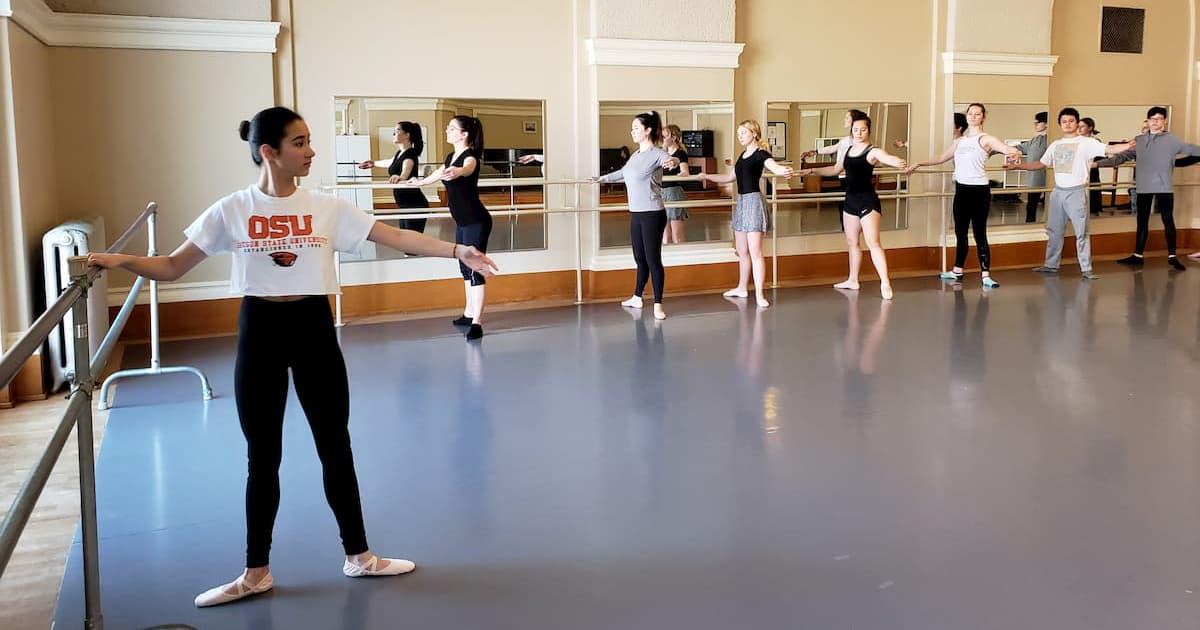
PAC 136 Dance: Ballet 1
Ballet I is an introductory course in ballet technique, which will enhance the student's understanding & appreciation of this aesthetic art form while developing & improving balance, flexibility, and musicality.
Classical ballet is based on Turnout: without turnout, classical ballet technique cannot exist. In Ballet I we will discuss both the functional role of and the aesthetic benefits of turnout; the physical factors that determine the range of natural turnout in a dancer; as well as common misconceptions about turnout that can lead to injuries. There will be several questions related to turnout on a Take-Home Quiz (Midterm), as well as questions that will ask you to identify the English translations/definitions for the French Ballet Terminology.
Approximately 25 minutes of the 50-minute class time will be spent performing ballet steps while holding onto a barre with one or both hands. The barre provides extra stability and aids in balance during the first part of the class, while the dancers are still warming up their muscles. During the second half of the class, the students will dance unsupported in the center of the dance studio, both in place and traveling across the floor. Basic jumps, turns, and traveling steps are performed at this time, when the dancers’ muscles have been properly warmed up.
Occasionally part of the class time will be used for body conditioning/strengthening and stretching exercises. Students are shown various ankle and foot exercises that can be done with Therabands, and students are taught various stretches for the hamstrings, calves, torso, neck, shoulders, and spine; including a traditional ballet barre stretch.
Unless there is a scheduling conflict, Ballet II classes feature live piano accompaniment by David Feinberg, a professional musician, and PAC Ballroom & Social Dance Instructor